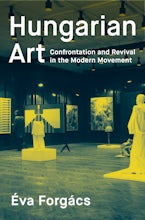Dr. Éva Forgács, formerly professor of art history at the Hungarian Academy of Crafts and design, has been teaching at Art Center College of Design in Pasadena, California since 1994. She has a Ph. D. in Art History from the Hungarian Academy of Sciences. A former curator at the Hungarian Museum of Decorative Arts and professor at the László Moholy-Nagy University in Budapest, she has published a number of essays and monographs on various chapters of Modernism in edited volumes, textbooks, and journals. She has also been active as a curator and art critic, and has published several books both in her native Hungary and in English.
Forgács was co-curator (with Nancy Perloff) of “Monuments of the Future: Designs by El Lisssitzky” at the Getty Research Institute, in November 1998, and was consultant at LACMA's Central European Avant-Gardes exhibition in 2002. She serves as book review editor of Centropa, is Advisory Board member of EAM (European Network of Avant-Garde and Modernism Studies), member of the International Academic Committee of the Bauhaus Institute, China Academy of Art, and vice president of the Society of Historians of Russian and East European Art and Architecture.


